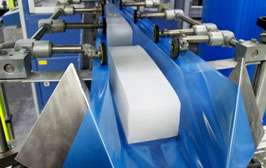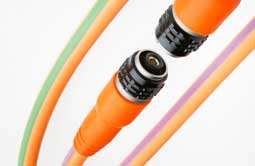To meet growing demand for silicone rubber, German firm Wacker Chemie AG is accelerating the expansion of its production capacities. Investment projects to this end are either in the planning stage or are nearing completion. Significant capacity expansions for liquid silicone rubber (LSR) will be available in the second half of this year, and will come into full effect in 2023. Increasing production volumes for high consistency rubber (HCR) are also scheduled. With expansion measures at several other sites, Wacker it will gradually increase its capacities for HCR and LSR grades significantly in the next few years. Over EUR100 million have been earmarked for this capacity boost.
The scheduled investments are in line with Wacker’s new growth targets announced in March this year. The company intends to increase growth in its chemical divisions by focusing on product specialties.
“Wacker returned to a growth trajectory last year. We finished 2021 with record sales and strong earnings – despite headwinds from raw material and energy prices. We want to maintain this momentum and are charting our course for accelerated growth going forward. This is also true for our specialty chemicals business,” says Wacker’s CEO Christian Hartel.
Wacker’s growth campaign will also focus on silicone rubber specialties. “Silicones are high-performance materials. They are essential for state-of-the-art product solutions and are among the innovation drivers in key industrial sectors such as automotive, electronics and medical,” says Robert Gnann, Head of the Wacker Silicones business division. Due to their product and processing benefits, silicone rubber demand has grown significantly. “Silicone rubber is strategic for us. As the world’s second largest silicone manufacturer, we are committed to supporting this dynamic growth even more strongly in the future.”
The availability of liquid and high consistency silicone rubber will benefit from several expansion measures in the next years. Wacker expects additional LSR capacities in the second half of this year due to several capacity expansions at its production site in Burghausen, Germany, which will be complete at the end of the year. New capacities will also be installed at Wacker’s US-based production site in Adrian, Michigan, to better serve the North and Central Americas market locally from next year onwards.
Substantial capacity expansions are also planned for high consist-ency rubber grades, starting with Wacker’s new production site in Panagarh, India, which will start production shortly. Additional HCR capacities will be available early next year at the company’s sites in the Czech Republic (Pilzen) and in Japan (Tsukuba). Pilzen produces ready-to-use Silmix silicone compounds for key industries; Tsukuba, Japan, which produces silicone emulsions, too, supplies high-consistency and room-temperature vulcanising silicone rubber as well as LSR.
Due to their physical, mechanical, chemical and elec-trical properties, high consistency silicone rubber often offers benefits compared to other rubber materials, which is why silicones are increasingly sought-after in the industry. In food, pharma, or medical applications, pure, sterilisable, and bio-compatible medical silicones have become indispensable.
In order to better meet this demand in the long-term, Wacker says it is also considering additional expansion measures at its sites in Zhangjiagang (China), Charleston (Tennessee, US) and in Burghausen (Germany).
The group also intends to expand its pyrogenic silica production in Zhangjiagang. Pyrogenic silica enhances the mechanical properties of silicone rubber and is therefore a key ingredient. It manufactures pyrogenic silica at its sites in Burghausen, Nünchritz, Charleston and Zhangjiagang, making the company one of the few backward-integrated silicone producers of pyrogenic silica for direct sale as well as for captive use.
Silicone rubber consists essentially of silicone polymers and fillers. The polymers are crosslinked with suitable reactants to produce three-dimensional structures that convert the fluid or ductile rubber compound into an elastomer. Silicone rubber is generally classified as high-consistency rubber (HCR), room-temperature vulcanising rubber (RTV) or liquid silicone rubber (LSR). Silicones are easy to process and, once crosslinked, feature excellent mechanical properties that remain unchanged over a wide temperature range. Silicone elastomers are used in areas such as automotive and
mechanical engineering, electronics and electrics, textiles, baby articles, toys, household appliances and sports articles, as well as in the construction industry.


